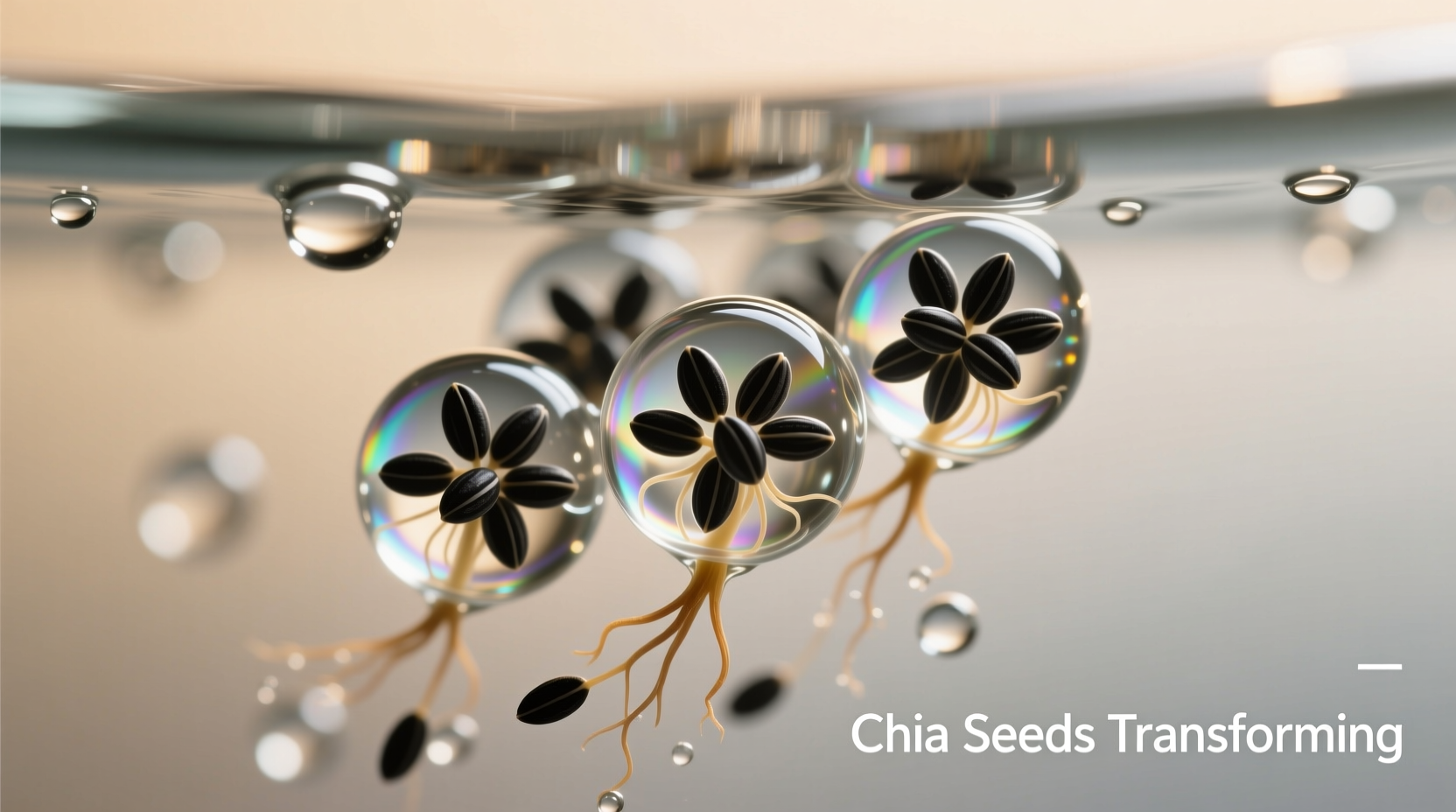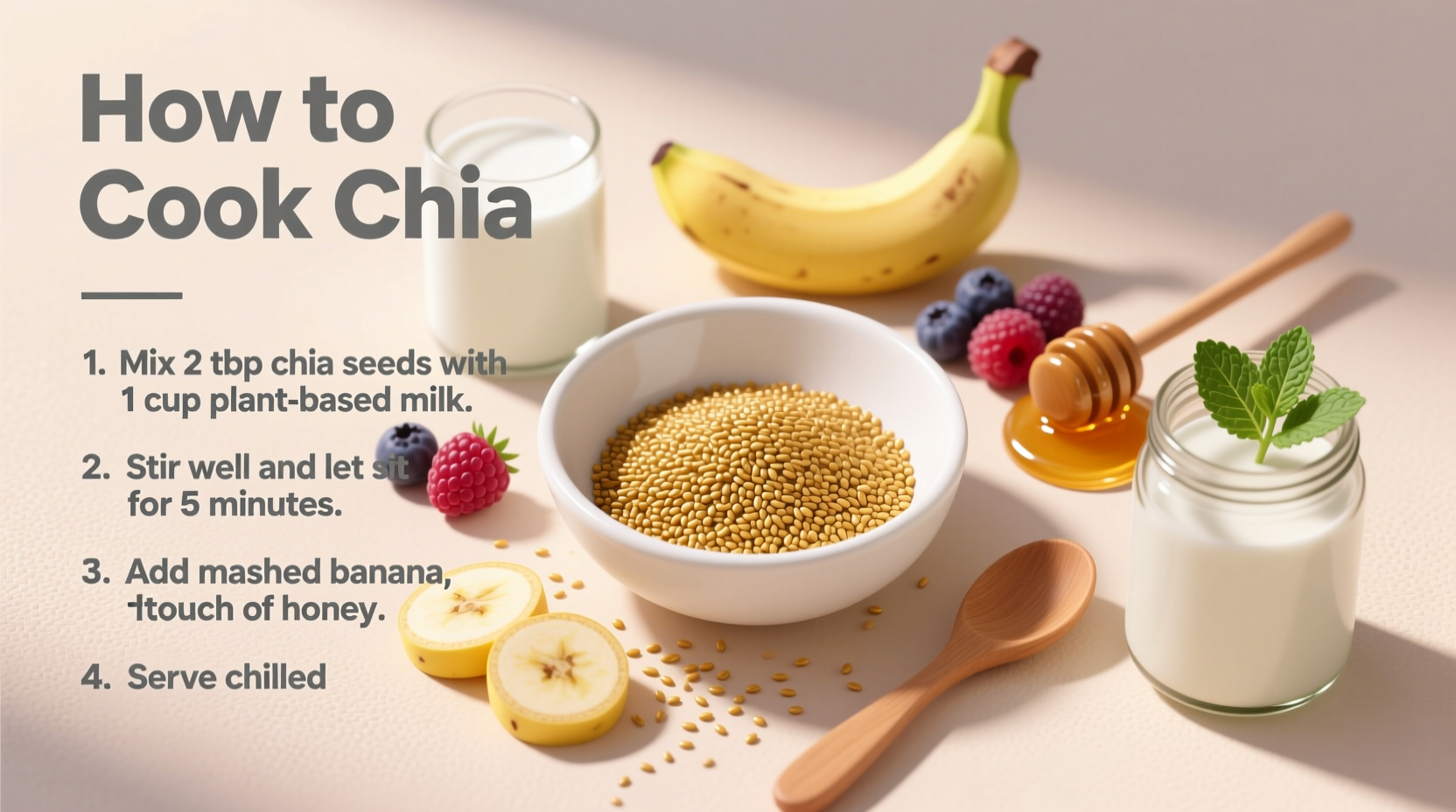Why Proper Chia Preparation Matters
Chia seeds (Salvia hispanica) transform dramatically when exposed to liquid, forming a gel-like coating through their high soluble fiber content. Proper preparation isn't just about texture—it maximizes nutritional benefits while preventing potential digestive discomfort. According to USDA FoodData Central, properly prepared chia provides 10 grams of fiber per ounce, along with complete plant-based protein and omega-3 fatty acids that become more bioavailable after hydration.

The Evolution of Chia Preparation: From Ancient Technique to Modern Kitchen
Chia's culinary journey spans millennia, originating in pre-Columbian Mesoamerica where Aztec and Mayan civilizations relied on these nutrient-dense seeds. Understanding this historical context helps modern cooks appreciate traditional preparation methods that science now confirms optimize nutritional benefits.
| Era | Preparation Method | Primary Use |
|---|---|---|
| Pre-1500s | Soaked in water or fruit juice | Hydration and endurance food for warriors and messengers |
| Colonial Period | Mixed with maize to create pinole | Staple food during travel and work |
| 20th Century | Rarely used outside native regions | Nearly disappeared from global diets |
| 21st Century | Multiple hydration techniques | Breakfasts, baking, and health-focused cuisine |
Five Reliable Methods for Cooking Chia Seeds
1. The Basic Soaking Method (Perfect for Puddings)
This traditional technique requires no cooking and preserves maximum nutrients. Combine 1 part chia seeds with 4 parts liquid (water, milk, or plant-based alternative) in a jar. Stir well to prevent clumping, then refrigerate for 15-30 minutes for soft gel or 2+ hours for thicker pudding. Stir once halfway through soaking.
Pro Tip: Add a squeeze of lemon juice during soaking to prevent premature gel formation on the surface.
2. Simmered Chia Porridge (Warm Breakfast Option)
For a warm, oatmeal-like consistency: Bring 4 cups liquid to gentle simmer, whisk in 1 cup chia seeds, and cook for 10-15 minutes while stirring constantly. Remove from heat and let stand 5 minutes. This method creates a thicker texture ideal for breakfast bowls.
Important: Simmering above 175°F (80°C) for extended periods may reduce omega-3 content, so keep cooking time minimal.
3. Baked Applications (For Texture Control)
When incorporating chia into baked goods, use pre-soaked seeds to maintain moisture balance. For breads and muffins, replace one egg with 1 tablespoon chia seeds + 3 tablespoons water (soaked 15 minutes). In cookie recipes, limit to 2 tablespoons soaked chia per batch to prevent excessive spreading.
4. Raw Incorporation Techniques (For Smoothies and Dressings)
For immediate use in smoothies or dressings, blend dry chia seeds directly with other ingredients. The mechanical action of blending breaks down seeds while the liquid environment begins hydration. Use within 2 hours for best texture.
5. Quick Microwave Method (3-Minute Solution)
Combine 2 tablespoons chia seeds with 1 cup liquid in microwave-safe bowl. Microwave on high for 90 seconds, stir, then microwave another 60 seconds. Let stand 2 minutes. This method works well for single-serving portions but requires careful monitoring to prevent boiling over.
Context-Specific Preparation Guidelines
Not all chia preparation methods work equally well for every application. Understanding these context boundaries prevents common kitchen frustrations:
- For smooth digestion: Always hydrate chia before consumption—never eat dry chia with limited liquid (FDA warning: can cause esophageal obstruction)
- For maximum nutrient retention: Cold soaking preserves more omega-3s than prolonged heating
- For thickening sauces: Use pre-soaked chia rather than dry seeds to control consistency
- For baking: Replace no more than 25% of flour with chia gel to maintain structure
Troubleshooting Common Chia Problems
Eliminating Clumps
Clumping occurs when seeds contact liquid unevenly. Prevent this by:
- Whisking seeds into liquid rather than pouring liquid over seeds
- Using room temperature liquid (cold liquid slows hydration)
- Stirring immediately after combining ingredients
Adjusting Consistency
Too thick? Add liquid 1 tablespoon at a time. Too thin? Let sit longer (up to 4 hours) or add more chia (1 teaspoon at a time). Remember that chia continues thickening for up to 12 hours after initial preparation.
Storage Solutions
Prepared chia keeps refrigerated for 5 days in airtight container. For longer storage, freeze in ice cube trays then transfer to freezer bags. Thaw overnight in refrigerator before use. According to USDA Food Safety guidelines, never leave prepared chia at room temperature for more than 2 hours.
Creative Applications for Perfectly Prepared Chia
Breakfast Innovations
Create layered parfaits with chia pudding, fresh fruit, and homemade granola. For savory breakfasts, mix simmered chia with vegetable broth, turmeric, and black pepper for an anti-inflammatory morning porridge.
Healthy Dessert Solutions
Replace half the cornstarch in fruit pies with chia gel for reduced sugar recipes. Create chocolate chia mousse by blending soaked chia with avocado, cocoa powder, and maple syrup.
Savory Applications
Use chia gel as egg substitute in veggie burgers (1:1 ratio). Mix into meatloaf or meatball recipes to retain moisture without breadcrumbs. Create glossy salad dressings by blending soaked chia with vinegar, mustard, and herbs.
Expert Tips for Consistent Results
After years of testing chia preparation methods across Latin American kitchens, I've discovered these game-changing techniques:
- Temperature matters: Warm liquids (not hot) accelerate gel formation by 40% compared to cold liquids
- Acid balance: Add citrus or vinegar after chia has partially gelled to prevent premature thickening
- Flavor pairing: Chia's neutral taste pairs well with strong flavors—try with cacao, matcha, or citrus zest
- Texture control: For pudding-like consistency, use 1:3 seed-to-liquid ratio; for thinner applications like dressings, use 1:6
Frequently Asked Questions
Can you eat chia seeds without cooking them?
Yes, but they must be properly hydrated first. Never consume dry chia seeds with limited liquid as they can expand in the esophagus. Always soak chia seeds in at least 4 parts liquid to 1 part seeds for safe consumption.
How long should chia seeds soak before eating?
For optimal texture and digestibility, soak chia seeds for 15-30 minutes for soft gel consistency or 2+ hours for thicker pudding texture. The minimum safe soaking time is 10 minutes to ensure complete hydration.
Why does my chia pudding taste bitter?
Bitterness usually indicates old or improperly stored chia seeds. Fresh chia should have a neutral, slightly nutty flavor. Store chia seeds in an airtight container in the refrigerator and use within 6 months of opening for best flavor.
Can you cook chia seeds without soaking first?
Yes, but you must use sufficient liquid (minimum 4:1 liquid-to-seed ratio) and constant stirring during cooking. Simmering dry chia directly can create uneven texture with some seeds remaining hard while others become overly soft.











 浙公网安备
33010002000092号
浙公网安备
33010002000092号 浙B2-20120091-4
浙B2-20120091-4